What It Was Like To Eat At The First Pizzeria
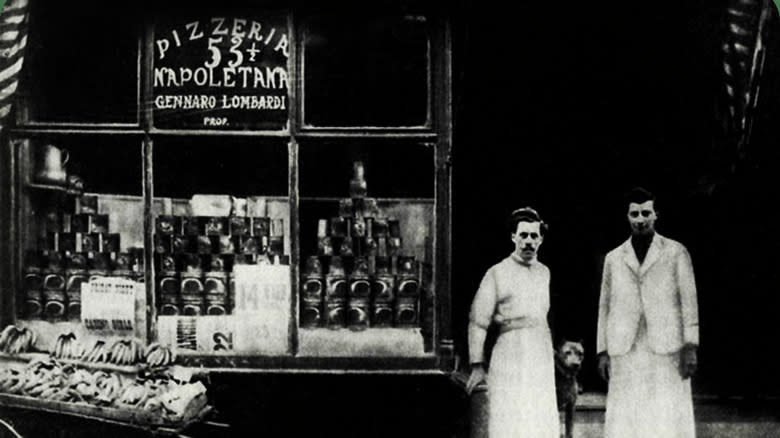
- Oops!Something went wrong.Please try again later.
Today it's hard to imagine the United States without pizza. It's the ultimate comfort food, the first takeaway choice, the party starter, and overall a delicious treat. Along with hot dogs and hamburgers, pizza is among the most beloved eats in America. We have Italian immigrants from sunny Naples to thank for bringing this dish to the US. One of them, Gennaro Lombardi, founded America's first pizzeria in 1905 in New York City. A tiny spot on Spring Street in the Little Italy neighborhood, Lombardi's became a food staple of the city and a testament to the rich culture of pizza making.
You'd think the oldest pizzeria in the US would become a huge international chain with multiple locations and multimillion-dollar income. But that's not the case for Lombardi's. While the original location closed in 1984, the pizzeria reopened in 1994. It's still on Spring Street, but a block away from where it all started. Lombardi's is in operation today, tirelessly serving coal-fired pizzas using Gennaro Lombardi's recipe that was brought from Naples. Let's go back in time and see what it was like eating at the first pizzeria back in the day.
Read more: The Ultimate Ranking Of American Fast Food Restaurants
Before Selling Pizza, Lombardi's Was A Neighborhood Grocery Store
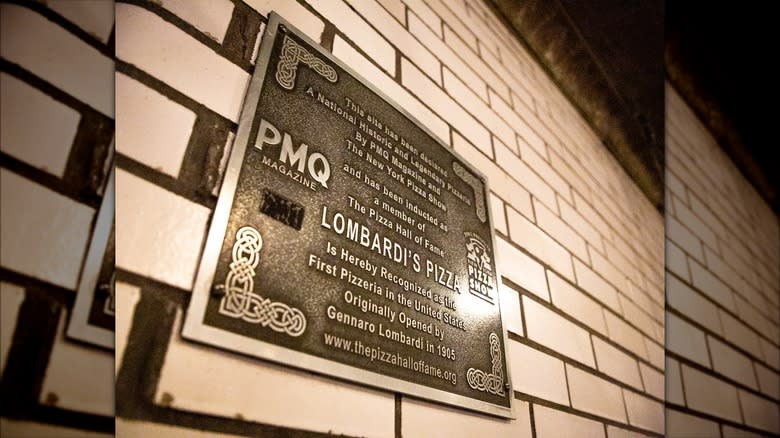
When the Italian immigrants came to New York at the end of the 19th century, they brought traditions with them. Bordered by Tribeca and Soho, Lower Manhattan's Little Italy was where they settled and where Gennaro Lombardi opened a grocery store in 1897. The shop sold a variety of items including pizza-reminiscent tomato pies, which eventually would become a basis for a different, much more influential venture. The store's clientele mostly comprised factory workers who would take the wrapped pies with them to have a bite between shifts.
In 1905, a historic decision was made by Lombardi. After a suggestion by the grocery store's Naples-born clerk Anthony Totonno Pero, Gennaro decided to switch to making pizza. He knew this food well as Naples had already been a pizza hotspot. It's believed that Lombardi also had a pizzaiolo relative back in Italy. The coal-fired oven was installed inside the store and the necessary permit was applied for. Everything was ready to treat patrons to the crunchy Neapolitan-inspired New York-style pizza.
The Original Recipe Followed Classic Neapolitan Traditions With A NYC Twist
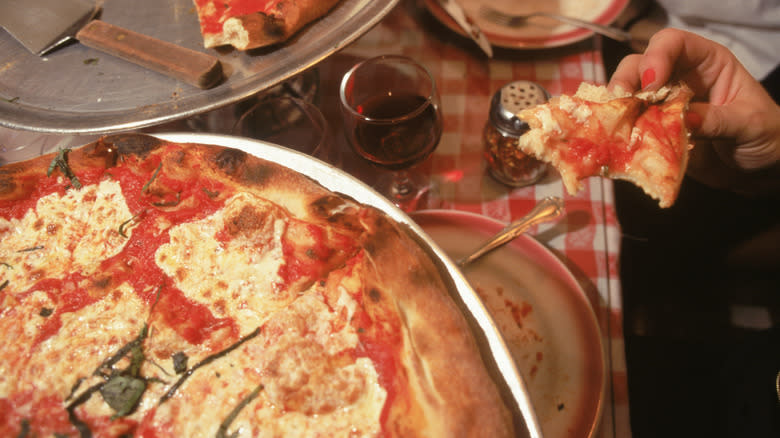
The pizzas sold at the beginning of the 20th century at Lombardi's were the classic Neapolitan style, albeit with a New York City flair. The main distinction came from the preparation process. Back in Italy, the baking was done in wood-fired ovens. But the Big Apple did it differently; here coal reigned supreme, and the shape of the oven compartments was enlarged to fit in more bread. The coal-fired ovens could reach up to 900 degrees F and permitted a quicker charring of the pizza dough.
And it's the combination of a simple Neapolitan recipe and the masterful baking technique that paved Lombardi's long-running success in the Neapolitan pizzeria business. Pizza would take 3 1/2 minutes to prepare and it was baked to excellence resulting in a cheesy top and deliciously crisp bottom. The temperature would be set between 700 and 900 degrees F to avoid burning the dough. San Marzano tomatoes, a generous portion of mozzarella cheese, and basil would be added on top. Yummy to the max.
During Its First Years, Lombardi's Operated As A Takeout-Only Pizzeria
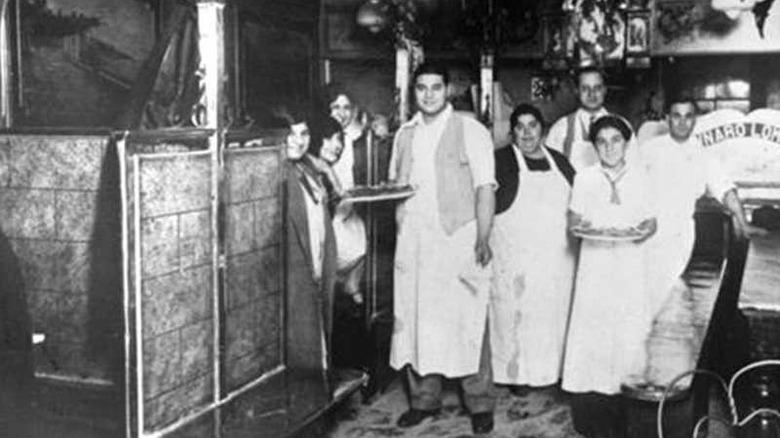
The first pizzeria in the US originally didn't have a space to sit and enjoy your slice. Although Gennaro Lombardi made a shift to oven-baked pizzas in 1905, the grocery store business was still going and the tables weren't yet placed. The pizzeria operated on a takeaway basis. Customers would come inside, take grocery items they needed, and order a freshly-baked pizza to eat at home.
At the time, Little Italy was considered a poor neighborhood and many immigrants didn't have a chance to heat their food at home. This left them with a cold pizza, a fact that probably influenced Gennaro Lombardi to think about fully embracing the dine-in pizzeria concept. Eventually, the grocery store items were replaced with tables and the menu was updated to include more variety. According to a Stage Magazine article from 1938, the fare included "three kinds of pizza -– cheese and tomatoes, sardines, and a combination of both."
Whole Pizzas Were Priced At 5 Cents And Fed Little Italy Neighborhood
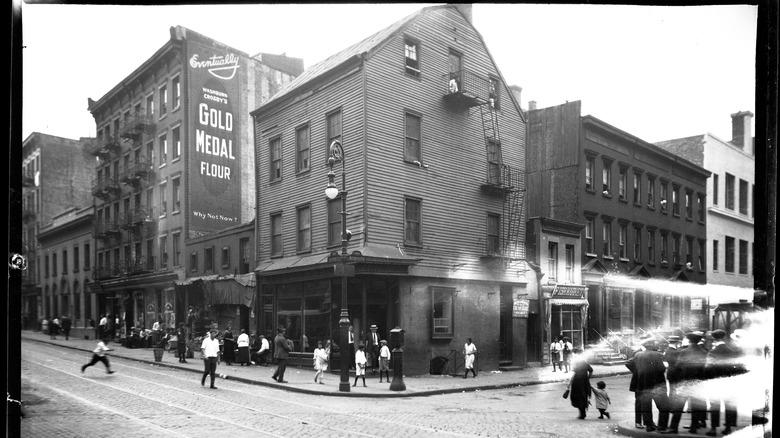
If a patron of Lombardi's from the past opened a menu of the famed pizzeria today, he would probably be shocked. The price for an "Original Margherita" is currently $22, and the menu also includes salads, starters, and different kinds of pasta. Just to compare, Gennaro Lombardi reportedly purchased the location on Spring Street for $200 to operate a restaurant there. But it was a different era and Little Italy was a much different neighborhood.
When the pizzeria was founded, the same classic Margherita would cost you a modest 5 cents. Moreover, you could also ask for a slice for even less. The venue has come a long way from a small neighborhood pizzeria to an iconic NYC venue with more than 100 years of history. In the 20th century, Lombardi's was more of a meeting place for the Italian community where they could eat their beloved food from home and talk. One thing that unite Lombardi's of the present and the past is the fact that it's still cash only. Some NYC traditions die hard.
Many Celebrities Favored The Pizzeria
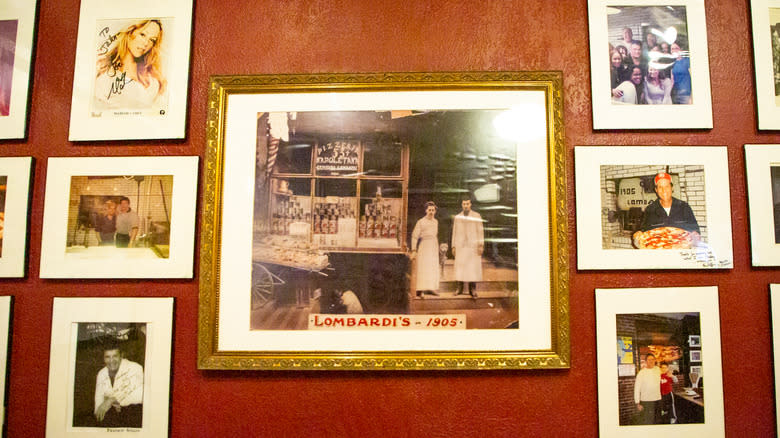
Over 119 years of operation, Lombardi's has seen many celebrities coming for its trademark pizza. For example, JFK's wife Jackie O used to come to Lombardi's with her cat frequently. She would order a huge prawn for her feline beforehand. Apparently, the celebrated Italian tenor Enrico Caruso was a fan too. "My father saw Caruso break glasses with his voice right in the old restaurant," said John Brescio, the current venue's owner, in a Whalebone Mag interview. World middleweight champion Rocky Graziano also came by.
In more recent times, the venue regularly saw representatives of Hollywood royalty. Jack Nicholson would come to Lombardi's when he was in town for sports events and would sit in the kitchen. Other moviemaking denizens like Francis Ford Coppola, Sophia Coppola, and Danny DeVito were often seen too. The list of famous guests even includes the "Wrecking Ball" singer Miley Cyrus. The appeal of Lombardi's among the celebrity crowd is truly special.
Lombardi's Closed In 1984 But Reopened Down The Block In 1993
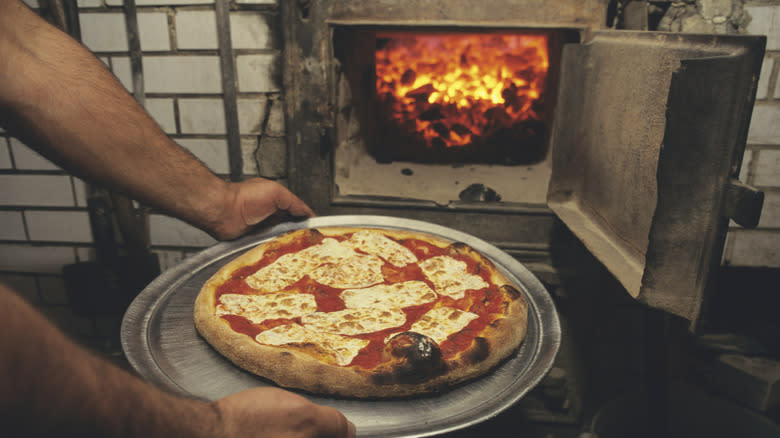
The coal-burning oven turned out to be both a blessing and a curse for Lombardi's. Although the baking process was at the heart of the pizzeria's trademark taste and financial success, operating the oven was a burden. Finally, after eight decades of tireless work making pizzas, the furnace became inoperable due to constant vibrations from the NYC subway trains (the line ran directly under the venue) and the overall deterioration. Lombardi's closed to the general public in 1984. It still provided space for community events for some time, but they eventually lost the 53 1/2 Spring Street building.
Lombardi's story hasn't ended, though. The grandson of Gennaro Lombardi partnered with John Brescia and resurrected the famed pizzeria in 1993. It also didn't leave Little Italy; the updated venue opened on 32 Spring Street, just a block away from the original location. To honor the traditions and ensure the same pizza quality, the new owners recreated the coal-burning oven from the previous location by incorporating the elements of the old furnace inside the new location. Thus, the reincarnated version of Lombardi's continued the 1905 tradition of serving Neapolitan pizza to the masses.
Lombardi's Title As The First Pizzeria In The US Is Disputed
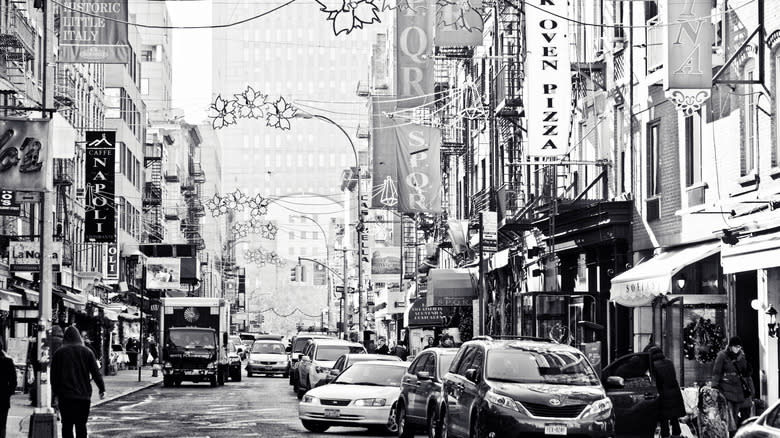
Some researchers speculate that the achievement of introducing the US to a famous Neapolitan flavor doesn't belong to Lombardi's. A pizza historian from Chicago Peter Regas believes there were pizzerias in Little Italy even before 1905. And there's one name to know in that regard, that of another Naples-born immigrant Filippo Milone. According to Regas' research, Milone was the owner of several pizza-serving establishments in the neighborhood. There's an advertisement in the Italian newspaper of New York City called "Il Telegrapho" that clearly states that Milone ran a pizzeria called "Antica Pizzeria Port'Alba" on 192 Grand Street in 1903. Regas thinks that Milone was a founder of six pizzerias in total around town including the one attributed to Gennaro Lombardi.
Why then, is so little known about those venues? At the beginning of the 20th century, Little Italy was an enclave of the Italian community, a neighborhood where non-Italian Americans rarely ventured. Also, the city's archives frequently made mistakes when adding Italian-owned places into records making it very hard to do research now. Finally, Milone didn't seem to build a strong brand around his venues and didn't have family members who could continue his work after his death. Gennaro Lombardi, on the other hand, knew how to properly market his establishment and stood the test of time.
Lombardi's Is A Go-To Place On The NYC Pizza Map Today
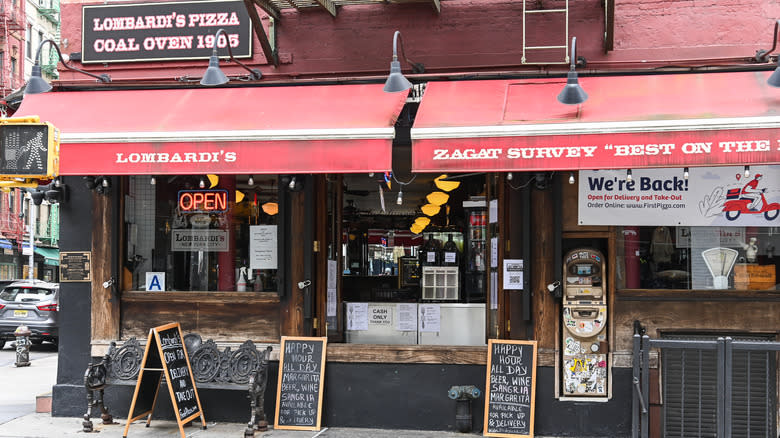
While the pizzeria is still open under the original name and ownership of Lombardi's grandson, the dining experience is a far cry from the humble working-class beginnings of 1905. The entrance greets you with a plaque celebrating the establishment's induction into the Pizza Hall of Fame. The venue has lots of archival photos on the walls and checkered red-and-white cloth on the tables. Crowds of tourists queue up to have a chance to try the famous "Original Margherita" and maybe have some meatballs too.
Over the years, the menu was extended to include such entries as "Famous Clam Pie" featuring baby clams, a calzone, and a variety of specialty pies with pancetta, pepperoni, and sausages. It's a New York legend but also kind of a "tourist trap" per New York Magazine, which described it as "good but not great." On the other hand, NYC.com called it "probably the best pizza in the United States."
Although many years passed since its opening, one thing remains unchanged: The pizzeria is still fully devoted to preparing mouthwatering Neapolitan fare according to a centuries-old recipe introduced by the founder. As you dine inside, you can't miss the sight of a coal-burning oven with a tiled surface and "1905" written on it. Lombardi's is an icon of the New York City food scene and a true museum of the traditions of Little Italy.
Read the original article on Daily Meal

